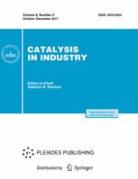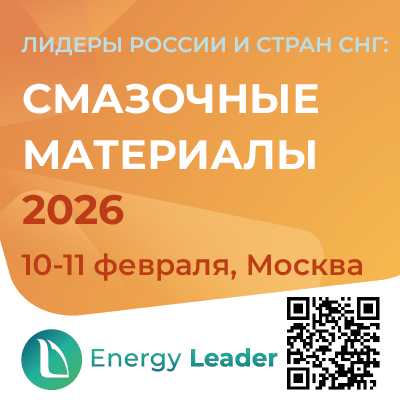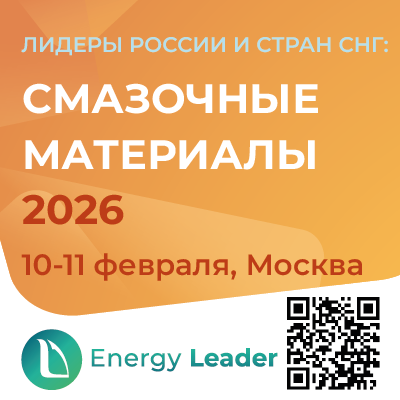Activation of Sibunit® carbon materials with nitrogen(II) oxide: study of physicochemical and adsorption properties of nitrogen-containing supports. Testing of the obtained adsorbents for the preparation of biocatalysts for low-temperature synthesis of es
https://doi.org/10.18412/1816-0387-2025-4-82-94
Abstract
Activation by etching the Sibunit® carbon material with nitrogen oxide (NO) allowed to obtain nitrogen-containing supports with a variable content of introduced nitrogen (N) from 2.3 at.% to 10.7 at.% (according to XPS data). Etching was carried out in a high-pressure reactor (from 15 to 29 bar) at elevated temperatures (180 and 230°C). The physicochemical and adsorption properties of the obtained nitrogen-containing carbon supports were studied. Thus, a study of the texture of the supports showed that with an increase in the nitrogen content, the specific surface area of the materials decreased from 470 m2/g to 65 m2/g, while the average pore diameter increased from 7.4 nm to 18.1 nm. From the analysis of the XPS spectra it followed that the introduced N atom was present in five forms: pyridine (fraction (α) of the state 0.47), pyrrole (α = 0.38), graphite N (α = 0.13), as well as in the O=N-C (α = 0.011) and C–NO2 (α = 0.0077) groups. The obtained nitrogen-containing carbon materials were studied as adsorbents for the immobilization of the rPichia/lip recombinant lipase. Using SAXS and SEM methods, it was shown that adsorbed lipase was capable of forming octamers and larger aggregates of complex structure (of 100 molecules). The fraction of single (non-aggregated) enzyme molecules increased (in 3.3 times) with an increase in nitrogen content (up to 11 at.%) in carbon material. Biocatalysts (BC) prepared by adsorptive immobilization of recombinant lipase rPichia/lip were tested in the low temperature esterification n of heptanoic C7 acid with butyl C4 alcohol, occurring at 20±2°C in hexane. It was found that the introduction of nitrogen during a one-time post-activation of the Sibunit® with NO had a noticeable positive effect on the enzymatic activity and stability of the prepared BC. The optimal content of introduced nitrogen was about 7–10 at.%: the biocatalytic activity increased by 2–3 times (compared to the original Sibunit), and the conversion of heptanoic acid was 84% for 6 h at 20±2°C.
About the Authors
A. V. NartovaRussian Federation
A. A. Ananina
Russian Federation
S. V. Semikolenov
Russian Federation
L. V. Perminova
Russian Federation
A. B. Beklemishev
Russian Federation
Yu. V. Larichev
Russian Federation
A. N. Salanov
Russian Federation
G. A. Kovalenko
Russian Federation
References
1. Плаксин Г.В. //Химия в интересах устойчивого развития. 2001. Т. 9. С. 609–620.
2. Полянская Е.М., Таран О.П. // Вестник Томского гос. ун-та. Химия. 2017. № 10. С. 6–26.
3. Serp P., Machado B. // Nanostructured Carbon Materials for Catalysis, RSC Catalysis Series. 2016. № 23 P. 1–45.
4. Podyacheva O.Y., Korobova A.N., Yashnik S.A., Svintsitskiy D.A., Stonkus O.A, Sobolev V.I., Parmon V.N. // Diamond & Related Materials. 2023. V. 134. P. 109771.
5. Ayiania M., Smith M., Hensley A. J. R., Scudiero L., McEwen J.-S., Garcia-Perez. // Carbon. 2020. V.162. P. 528-544.
6. Lobiak E.V., Bulusheva L.G., Fedorovskaya E.O., Shubin Yu.V., Plyusnin P.E. et al. // Beilstein J. Nanotechnol. 2017. V.8. P. 2669–2679.
7. Evtushok V.Yu., Suboch A.N., Podyacheva O.Yu., Stonkus O.A., Zaikovskii V.I., et al. // ACS Catal. 2018. V. 8. P. 1297−1307. DOI: 10.1021/acscatal.7b03933
8. Tuaev X., Paraknowitsch J. P., Illgen R., Thomas A., Strasser P. // Physical Chemistry Chemical Physics. 2012. №14. Р. 6444–6447.
9. Shi W., Wu K.-H., Xu J., Zhang Q., Zhang B., Su, D. S. // Chemistry of Materials. 2017. V. 29. № 20. P. 8670–8678.
10. Favaro M., Agnoli S., Perini L., Durante C., Gennaro A., Granozzi G. // Phys. Chem. Chem. Phys. 2013. V. 15. P. 2923–2931.
11. Paraknowitsch J. P., Thomas A., Antonietti M. // J. Mater. Chem. 2010. V.20. P. 6746–6758.
12. Maksimova T.A., Mishakov I.V., Bauman Y.I., Ayupov A.B., Mel’gunov M.S., Dmitrachkov A.M., Nartova A.V., Stoyanovskii V.O., Vedyagin A.A. // Materials. 2022. V.15. Nо. 22. P. 1–20.
13. Inagaki M., Toyoda M., Soneda Y., Morishita T. // Carbon. 2018. V. 132. P. 104–140.
14. Hulicova D., Yamashita J., Soneda Y., H Hiroaki, Kodama M. // Chem. Mater. 2005. V. 17. P. 1241–1247.
15. Kodama M., Yamashita J., Soneda Y., Hatori H., Nishimura S., Kamegawa K. // Mater. Sci. Eng. 2004. V. 108. P. 156–161.
16. Kumar Kuntumalla, M., Attrash, M., Akhvlediani, R., Michaelson, S., Hoffman, A. // Applied Surface Science. 2020. V. 525. P. 146562.
17. Bandosz, T. J., Ania, C. O. // Activated Carbon Surfaces in Environmental Remediation. Chapter 4. 2006. P. 159-229.
18. Солдатенков А.Т., Колядина Н.М., Ле Туань Ань. Основы органической химии душистых веществ для прикладной эстетики и ароматерапии. М.: ИКЦ «Академкнига», 2006. 240 с.
19. Войткевич С.А. 865 душистых веществ для парфюмерии и бытовой химии. М.: Пищевая промышленность, 1994. 594 с.
20. Almeida de R.M., Souza F.T.C., Junior M/A.C., Albuquerque N.J.A., Meneghetti S.M.P., Meneghetti M.R. // Catalysis Comm. 2014. Vol. 46. P. 179–182.
21. Huang S.-M.., Wu P.-Y. , Chen J.-H., Kuo C.-H., Shieh C.-J. //Catalysts 2018. V. 8. P. 338–348. doi:10.3390/catal8080338.
22. Nguyen P.C., Nguyen M.T.T., Lee C.-K., Oh I.-N., Kim J.-H., Hong S.-T., Park J.-T. // Carbohydrate Polymers. 2019. Vol. 218. P. 126–135.
23. Pereira A. da S., Fraga J. L., Souza C. P. L. , Torres A. G., Amaral P.F. F. // Catalysts. 2023. V.13. P. 780–796. https://doi.org/10.3390/catal13040780
24. Gandhi N. N., Mukherjee K. D. // J. American Oil Chem. Soc. 2001. V. 78. P. 161–165.
25. Arsan J., Parkin K.L. // Biotechnol. Bioeng. 2000. Vol. 69. P. 222–226.
26. Suster C.R. L., Toledo M., Matkovic S. R., Morcelle S R., Briand L. E. // Сatalysts. 2023. V. 13. P. 625–645. https://doi.org/10.3390/catal13030625.
27. Коваленко Г. А. // Кинетика и катализ. 2023. Т. 64. № 5. C. 499–527. DOI: 10.31857/S0453881123050052.
28. Беклемишев А.Б., Пыхтина М.Б., Перминова Л.В., Коваленко Г.А. // Биотехнология. 2021. Т. 37. № 5. С. 5–19. doi: 10.21519/0234-2758-2021-37-5-5-62
29. Briggs D., Seah M.P. Practical Surface Analysis by Auger and X-ray Photoelectron Spectroscopy, John Wiley&Sons. Inc., Chichester. 1983. 533 р.
30. Moulder J.F., Stckle W.F., Sobol P.E., Bomben K.D. Handbook of X-Ray Photoelectron Spectroscopy, Perkin- Elmer, Eden Prairie, MN. 1992. 261 р.
31. Gregg, S.J. and Sing, K.S.W. Adsorption, Surface Area and Porosity. Cambridge, MA: Academic Press, 2nd ed. 1982
32. Фенелонов В.Б. Введение в физическую химию формирования супрамолекулярной структуры адсорбентов и катализаторов. Новосибирск: Изд-во СО РАН. 2002.
33. Konarev P.V., Petoukhov M.V., Volkov V.V., Svergun D.I. // J. Appl. Cryst. 2006. V. 39. P. 277– 287.
34. Нартова А.Н., Ананьина А.А., Семиколенов С.В., Дмитрачков А.М., Квон Р.И., Бухтияров В.И // Кинетика и катализ. 2023. V. 64. № 4. С. 466–472. DOI: 10.31857/S0453881123040093.
35. Bearden J.C., Jr. // Biochim. Biophys. Acta. 1978.Vol. 533. P. 525–529
36. Franke D., Jeffries C.M., Svergun D.I. // Biophys J. 2018. V. 114. P. 2485–2492. DOI: 10.1016/j.bpj.2018.04.018.
Review
For citations:
Nartova A.V., Ananina A.A., Semikolenov S.V., Perminova L.V., Beklemishev A.B., Larichev Yu.V., Salanov A.N., Kovalenko G.A. Activation of Sibunit® carbon materials with nitrogen(II) oxide: study of physicochemical and adsorption properties of nitrogen-containing supports. Testing of the obtained adsorbents for the preparation of biocatalysts for low-temperature synthesis of es. Kataliz v promyshlennosti. 2025;25(4):82-94. (In Russ.) https://doi.org/10.18412/1816-0387-2025-4-82-94



























